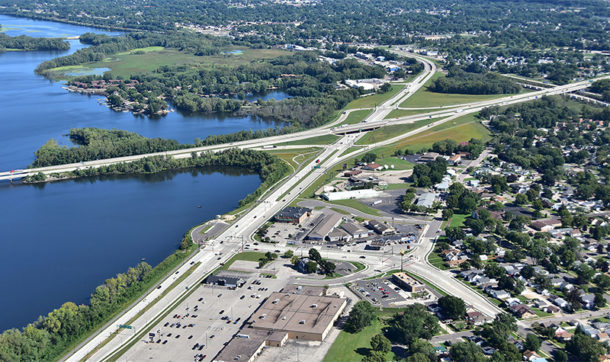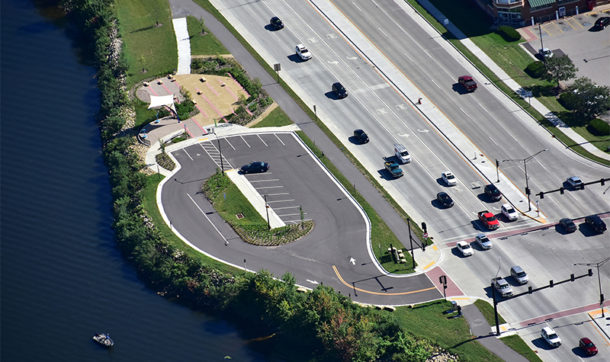Award-Winning Interchange Improves Gateway to La Crosse, Onalaska
 The main corridor through southwestern Wisconsin has received a much-needed upgrade – and incorporated the popular new Eagle Viewing Area. When the Wisconsin Department of Transportation began planning for improvements to I-90 and the roads connecting the Cities of Onalaska and La Crosse to the interstate, local residents and businesses were ready with ideas as Ayres Associates took the lead on project engineering.
The main corridor through southwestern Wisconsin has received a much-needed upgrade – and incorporated the popular new Eagle Viewing Area. When the Wisconsin Department of Transportation began planning for improvements to I-90 and the roads connecting the Cities of Onalaska and La Crosse to the interstate, local residents and businesses were ready with ideas as Ayres Associates took the lead on project engineering.
The new interchange reconditioned I-90, raised it over STH 35 to improve vertical clearances, and lowered it under CTH B to improve vertical clearances. The STH 35/US 53 interchange was designed and reconstructed as a diamond interchange. An auxiliary lane added between the US 53/STH 35 interchange and the STH 157/US 53 interchange accommodates increased traffic patterns. In addition, 13 bridges were replaced or rehabilitated.
The American Council of Engineering Companies of Wisconsin presented Ayres Associates a 2019 Engineering Excellence State Finalist Award for the project’s design.
 Connected to the highway improvements was the design of the Eagle Viewing Area off the Rose Street exit. Before construction began on I-90, birdwatchers were parking on the shoulder of the highway ramp to view eagles feeding in the springtime, creating a safety hazard for the viewers and other motorists. As part of the I-90 improvements, safe parking areas were constructed where birdwatchers could stop to use the new viewing area. Multiuse trails along the Black River near its confluence with the Mississippi River allow bicyclists and pedestrians to enjoy the scenic location.
Connected to the highway improvements was the design of the Eagle Viewing Area off the Rose Street exit. Before construction began on I-90, birdwatchers were parking on the shoulder of the highway ramp to view eagles feeding in the springtime, creating a safety hazard for the viewers and other motorists. As part of the I-90 improvements, safe parking areas were constructed where birdwatchers could stop to use the new viewing area. Multiuse trails along the Black River near its confluence with the Mississippi River allow bicyclists and pedestrians to enjoy the scenic location.
To accommodate the raising and widening of an existing bridge over the freeway, fiber reinforcement polymer (FRP) fabric was applied to the pier caps to cost effectively strengthen and preserve the existing piers. FRP allowed the team to reuse existing materials instead of wastefully removing and having to dispose of structural components that still have service life remaining.
The Cities of Onalaska and La Crosse also took the opportunity to improve their water and sanitary sewer facilities within the project area, and Ayres included these plans with the roadway plans to allow for one contractor to coordinate all the work in the area. This process helped to speed up construction time frames and avoided potential conflicts among multiple contractors working in the same area.
The large and complex project spanned five construction seasons and required coordination with the Minnesota Department of Transportation as well as a nearby railroad and airport. It was completed on budget and on schedule.
